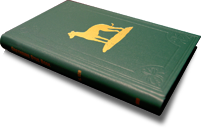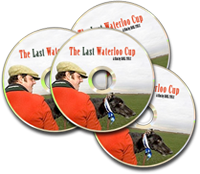Coursing is good for the Irish Hare species!
Guardian 23.5.11
Hare today, gone tomorrow?
Researchers are on the hunt for Ireland’s native hares, which are under threat from their European cousin
guardian.co.uk, Monday 23 May 2011 16.30 BST
Irish hares entertain many a visitor to the country with their antics at airports. They have been known to venture on to the runway and pursue aircraft during take-off. There’s a theory – yet to be proven – that they enjoy the vibration and noise.
Watch them scampering around in numbers and you’d find it hard to imagine that the creature’s long-term survival could be under threat. That would be a sorry fate, for the Irish hare is unique, a great survivor, and one of the few mammals in Ireland not to have perished during the Ice Age.
But today the Irish hare is under attack from all sides. Just as the red squirrel has been ousted by the grey, which came from North America, the Irish hare’s nemesis could be a foreign invader – its European brown cousin, first introduced in 1848, and known to be breeding with the natives. Researchers at Queen’s University Belfast fear for the future of Ireland’s endemic species, known to be at least 28,000, and possibly even 60,000, years old.
Moreover, in Northern Ireland the Irish hare’s demise could be hastened by well-meaning politicians. Recently the Northern Ireland Assembly banned hare coursing, the sport in which hares are chased, and sometimes killed, by greyhounds. Few doubt the good intent, yet Queen’s zoologist Dr Neil Reid, who has studied the Irish hare’s ecology for seven years, reckons it is a bad move.
Reid has found that Irish hares appear to thrive far better in areas run by the Irish Coursing Club (ICC) than in similar countryside elsewhere. “ICC sites are managed favourably for hares – foxes are shot and other forms of hunting prohibited,” he says. “They maintain enhancement of suitable habitat – for instance, hares like fields with rushes where they can hide.
“They’re taken from the wild into captivity, treated for parasites, coursed, then put back into the wild. Coursing is perceived as a blood sport where animals die, and so they do – but only around four in 100. The ban wasn’t based on the conservation debate, but on one surrounding animal welfare.”
Reid’s colleague, Professor Ian Montgomery, head of biological sciences at Queen’s, also believes the Assembly’s decision could backfire. “Without legal, well-organised and regulated coursing, much of the cost of conservation will fall exclusively on government,” he says. Reid compares the situation with game reserves in Africa, where elephants are shot legally and populations managed. “Provided things are regulated, that benefits wildlife, because once wildlife starts to make money, it’s secure.”
One reason for introducing the European brown hare to Ireland was to add variety to the coursing stock. But a notable difference soon became apparent: unlike the Irish hare, the interloper doesn’t run in a straight line, and so is of little sporting use.
Reid has just completed a comprehensive review of studies focusing on how the European brown impacts on native mountain hare species around the world. In Ireland, where the two already battle for food and space, the outsider has popped up in locations where there are no records of it ever being imported. “We don’t know if they’ve spread or were introduced without us knowing,” he says.
The European brown is “taller and lankier” than the Irish one, with longer ears, and sandy in colour rather than displaying the reddish brown of the native. While the Irish hare differs markedly from its closest relative, the mountain hare, by inhabiting lowland areas, it betrays a genetic similarity by developing white patches in winter.
Reid has witnessed European brown and Irish hares boxing in the wild, a pre-mating ritual that spells bad news for the latter’s long-term survival. “Hybrids produce offspring that breed with the brown hare – they tend not to go back to the Irish hare,” says Reid. “After several generations, only brown hares are being produced.”
In parts of Sweden, the mountain hare has all but disappeared thanks to the European brown interloper, pushed up to the snow line, where it’s safely out of reach. However, in Ireland there’s no such high-altitude refuge.
So concerned are experts from the International Union for the Conservation of Nature (IUCN), the world’s foremost authority on threatened species, that drastic measures are now being considered to deal with the European brown. “We’re talking about a trial cull that could, if feasible, lead to an eradication strategy,” says Reid.
This may seem drastic when the last national survey of Irish hares, four years ago, calculated the population at around 650,000, while the most recent estimate of European browns, in 2005, was just 2,000, mainly inhabiting the heart of Northern Ireland. But Reid is acutely mindful of events in Sweden; and also of what has happened to Ireland’s red squirrel, supplanted by the grey after just 13 of the latter were introduced 100 years ago at Castle Forbes, Co Longford. “If we’re going to do anything about the European brown, now’s the time,” he says.
Reid’s latest work was funded by the Northern Ireland Environment Agency, and he’s eager to carry out more. “There’s a lot to be done around land management. Irish hares need tall vegetation, such as rushes, for hiding and sleeping. However, they may mistake the grass of silage fields as a good spot for lying-up and giving birth.”
Indeed, silage-making farmers could, unwittingly, be another enemy. The grass crop is usually cut in late spring and early summer when leverets (young hares) are often born. Reid suspects that some perish in the machinery, causing local populations to decline.
A simple agricultural change could be the answer. Were farmers to mow from the field’s centre to its edges, young hares might stand a better chance of escape. “We haven’t proof yet that existing harvesting methods (starting from the edge and working in) are causing a decline in numbers – it’s speculation – so we want to do more work on that.”
Odd though it may seem, airports, despite the swathes of tarmac and screeching planes, offer an ideal habitat. “The surrounding grass isn’t treated with herbicide and is cut later than on farms,” says Reid. “That gives leverets time to move away.
“They probably survive better – at Dublin, I once found five sitting around my car in the car park. They seem more sociable than European browns and unperturbed by human activity.”
http://www.guardian.co.uk/education/2011/may/23/irish-hare-in-decline

